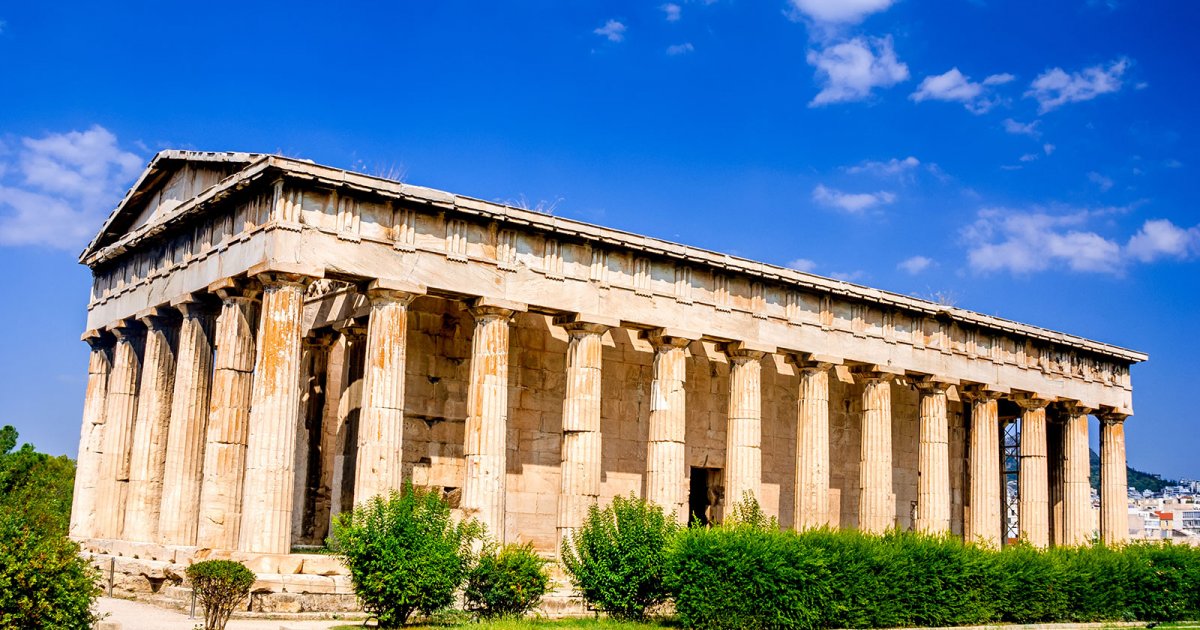AGORA, Temple Of Hephaestus
 Language: English / USA
Language: English / USA
What you can see before you is the magnificent Temple of Hephaestus. Not much imagination is required here because the temple is almost perfectly conserved: it was turned into a church and survived the destruction that affected almost all the pagan constructions.
Construction of the temple began in 449 BC, just before the Parthenon, with which it has many elements in common. The work was, however, not completed until 416, apparently because the funds for it were used instead for work on the Acropolis.
The name of the architect is uncertain. Some believe it was designed by Ictinus, who was also the architect of the Parthenon, while others attribute it to Callicrates, who designed the Temple of Athena Nike.
It was built as a gift of the blacksmiths who lived in this neighborhood, and thus dedicated to Hephaestus, considered the god of blacksmiths. It is the best-preserved Greek temple that can be seen today.
With six columns on the short sides and thirteen on the long sides, it is considered a typical temple of the Doric order, dating to the Classical Period during which Athens was governed by Pericles.
It was turned into an Orthodox church dedicated to Saint George around 450 AD. The colonnade and the pediments were left intact, while the naos, where the statues of the gods were kept, was adapted to the new religion. In particular, the original flat, wooden roof was turned into the vaulted roof that can still be seen today, and the two rows of columns that divided the inside of the naos into three parts were removed. Unfortunately, the bronze statue of Hephaestus as well as the one of Athena next to it, outstanding works by the sculptor Alkamenes, have been lost.
As in the Parthenon, the inside wall is adorned with a frieze depicting battles against the centaurs and other monstrous creatures. If you look closely, you can still see traces of the vibrant colors that enhanced the sculpted scenes. Here too, the metopes, the stone plaques supporting the roof, 10 on the front and 24 on the sides, were sculpted with bas-reliefs portraying battles from mythology, in this case the labors of the two heroes, Hercules and Theseus.
An interesting fact: in 1834, after the proclamation of Greek independence, the temple hosted the first national exhibition of archeological findings.



